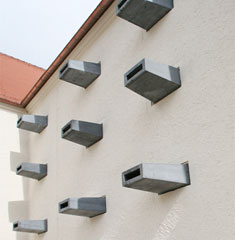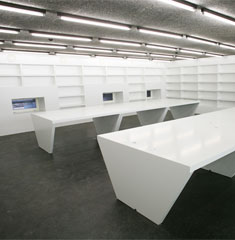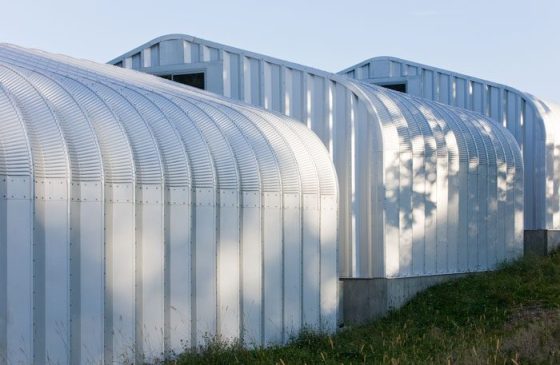
The Museum Castle Freudenstein, designed by AFF Architekten, is the result of the conversion of an ancient castle located in the town of Freiberg, Germany.
The castle itself partly dates back to the time of the Romanesque style. It was later fully extended to a four-wing-ensemble, including a large tower. During the Seven Years War from 1756 to 1763, its interior became entirely destroyed. From the late 18th century on, the remains of Castle Freudenstein were primarily used for storage.

AFF architects concept was to respect the identity of place, while referring with their design in numerous ways to the new use. With an addition in black concrete, the architects clearly marked the museum entrance in the castles courtyard.
The small tubular shapes, which appear now on the facades outside, were originally intended as window openings used for bringing some daylight into the building. The newly inserted rough concrete box for the 2000 square meters of the unique Saxon mining archive and its public reading and presentation area is surely the stronger part. This impressive structure, coloured in anthracite, secures the climatic needs for its precious content.








Info form AFF architects website:
Courtyard The so called Neue Schlosshof is of rectangutar shape and surrounded by four wings. The design corresponds to the exhibition inside the building. Large plates of yellow granite in he shape of particularminerals are cut into the surface of sanded asphalt. Two building extensions of black concrete complete the complex.
Kirchenflügel An second building-body has been inscribed into the former Kirchenflügel. This ark shelters behind its rough walls the entire history of Saxon mining within four storeys of archives. lt anchors itself with the historical walls and reveals itself at the exterior facade with expanded cantilevers (so called “Hutzen“ ). The spatial relations which between the old walls and the newly introduced body set consciously a stage for the conception of the new and the old story of the castle : the former chapel and intermediate arsenal is today reading rom and exhibition space.















 The geometric model employed, is based on the trefoil organization. The whole building’s program is distributed over the surfaces which ascend incrementally from ground level, spiraling around a central atrium as you can see on the following pictures.
The geometric model employed, is based on the trefoil organization. The whole building’s program is distributed over the surfaces which ascend incrementally from ground level, spiraling around a central atrium as you can see on the following pictures.
